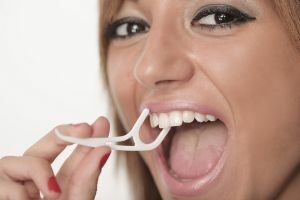 Interdental and liquid products for high-quality oral hygiene are primarily aimed at solving the problem of cleaning so-called interdental spaces.
Interdental and liquid products for high-quality oral hygiene are primarily aimed at solving the problem of cleaning so-called interdental spaces.
The gaps between the teeth are formed naturally. However, these sites often cause a variety of dental problems associated with the accumulation of food debris and the formation of plaque. Dentists recommend the use of many different interdental cleaners to clean these places.
Contents
- Means for cleaning the interdental spaces
- Toothpicks - a way deep in the eyelids
- Floss applications
- Application of flossets
- Special toothbrushes and brushes
- Fluids for oral hygiene
Means for cleaning the interdental spaces
Today anyone can choose the mostA fast and convenient method for effective cleaning of interdental spaces. To do this, do not have to make special efforts.
Toothpicks - a path deep in the centuries
One of the most widely spread devices is an ordinary toothpick. This interdental remedy was used in ancient Egypt. The working surface of some toothpicks is made in the form of a triangle or as precisely as possible repeats the shape of the depression between the teeth.
For the production of toothpicks are used such materials: 
- plastic;
- wood;
- bone.
The use of such interdental drugs is recommended after eating meat or plant foods with relatively strong fibers that tend to get stuck between the teeth. If the teeth are too close together, the use of such devices may not be convenient enough.
Floss Applications
Dental floss or floss for qualitative cleaning of gaps between teeth is considered one of the most high-quality and widely used means for providing oral hygiene.
Most flosses are made from one stretched fiber with a high strength. Each thread is covered with a special material, which contributes to increased friction and better cleaning.
In the production of floss, the fiber is treated with a special composition based on paraffin. Then the material cools down, and the dental floss is flattened.
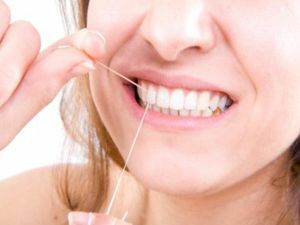 If you want to produce floss with odor, another paraffinic formulation is applied to the product with the addition of a small amount of flavored oil. The melting point of the first paraffin mixture is slightly lower than the second one.
If you want to produce floss with odor, another paraffinic formulation is applied to the product with the addition of a small amount of flavored oil. The melting point of the first paraffin mixture is slightly lower than the second one.
Of all the above devices, dental floss remains the most popular interdental. Dental threads differ in the components that make up their composition, as well as in their design features.
Today, 4 main varieties of interdental flosses are available on the market:
- multifilament single-component yarns are manufactured using the technology of twisting or woven several nylon fibers;
- multifilament two-component yarn is made from bun and nylon, Peeback is a kind of polymer coating, and the components are glued together, forming a single thread;
- monofilament single-component yarn;
- single-fiber two-component.
Dental tape in its constituent components is no different from the thread. The difference lies in the fact that several fibers are used to make such a tool. Dentists recommend using the tape to patients with diagnosed diastema and trema or with an average interdental gap.
Application of Floatset
Floсsetta is a specially developed device that pulls the dental floss. The product is made of durable plastic.
There are two main versions of the product:
- onion;
- fork.
On the design features like a slingshot, only the handle for convenience is located parallel to the tensioned thread.
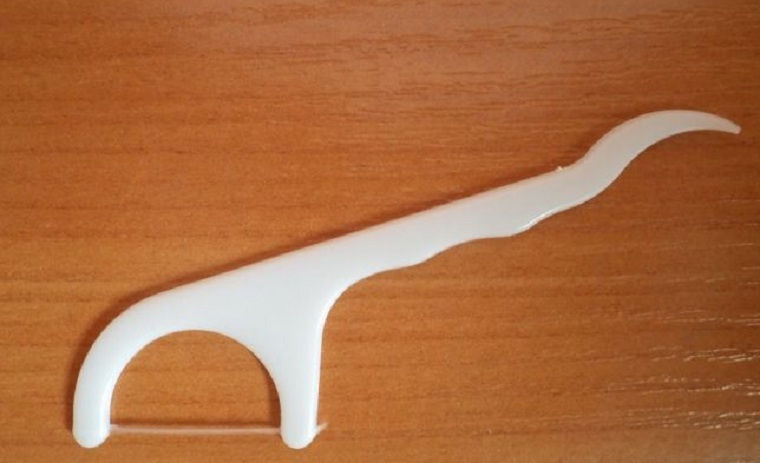
Special toothbrushes and brushes
Special brushes are also used to remove dirt from the interdental space. The device is an analogue of an ordinary toothbrush.
The main distinguishing feature of this tool is the smaller number of beams on the cleaning head, as well as the unique shape of the working brush field.
If this is a single-beam device, a small bundle of bristles will be located on the miniature head. Cutting the working brush field can be performed in 3 versions:
- is a one-level flat;
- is a multilevel cone-shaped;
- multilevel in the form of a truncated cone.
The number of beams in the manual brush can correspond to 6 or 7. At the same time, the bristles are placed in 2 parallel rows or in a circle. Bristles in such interdental means are made of nylon fiber.
In brush brushes, the design is almost identical to ordinary toothbrushes. Ershiki are made of wire with a small bristle, fixed between the turns.
The best interdental remedies are:
- Dental Floss Lacalut dental floss;
- brushes Lacalut Interdental XS;
- interdental brushes Oral-B;
- thread Oral-B Superfloss;
- Floss Sensodyne.
Liquid care products for oral hygiene
Among the existing liquid oral hygiene products, rinses are most popular. These are ready-made hygienic solutions, which can be purchased at every specialized store.
Such products can be completely non-alcoholic or contain from 5% to 27% alcohol, which helps to eliminate harmful bacteria. Rinsers that do not contain alcohol are recommended for use by a sufficiently wide range of patients:
- to underage children;
- adults;
- to people with intolerance of alcohol-containing liquids, etc.
All existing types of rinses differ in their healing properties. These drugs can contain substances that contribute to the elimination of carious formations on tooth enamel.
These substances include:
- extracts of medicinal plants;
- antiseptics;
- various essential oils.
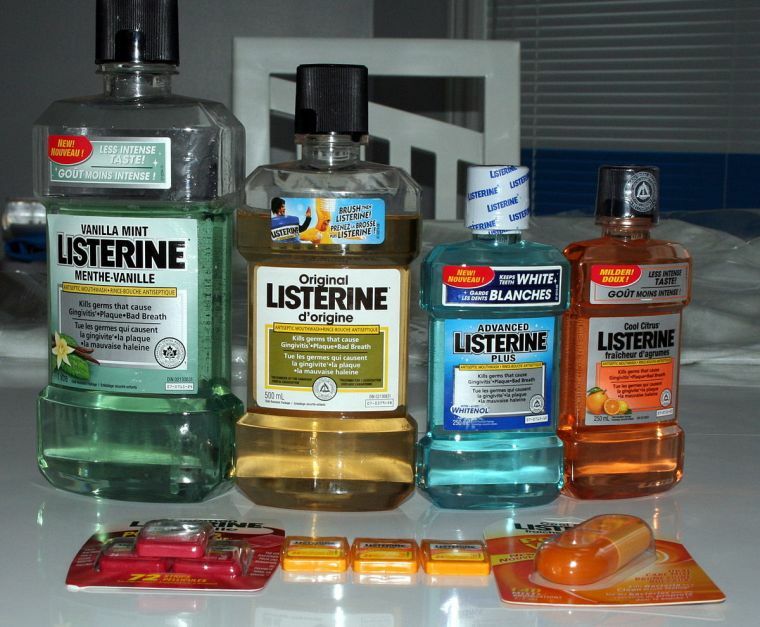
Some rinse aid components help slow down the formation of plaque.
Special elixirs are also made for rinsing the oral cavity. These products are diluted with water, since the content of alcohol in them exceeds 30%, and sometimes even reaches 60%.
For prophylactic purposes, a proportion corresponding to 15-25 drops per glass of water is used. To treat various diseases of the oral cavity, dentists recommend increasing the level of elixirs to 30-50 drops.
Concentrates for rinsing the oral cavity always contain a large amount of alcohol. For the prevention of such funds are used in a diluted form. For medicinal purposes, liquids containing a large amount of alcohol are applied to the problem 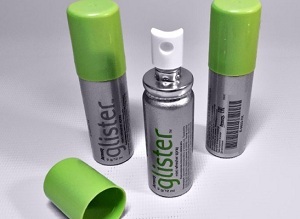 .
.
Sprays are used for fresh breath. When added to the spray additional useful components, you can use them to prevent various diseases of the mouth. Liquid media can serve as an excellent addition to the basic cleaning products while providing hygiene of interdental spaces.
The best liquid products:
- rinsers Listerine Expert;
- concentrated rinse liquid Glister;
- cedar elixir for rinsing( 5 components);
- non-alcoholic rinse aid Oral-B;
- deodorant-conditioner Ecofusion Ecofresh.
Today, more and more often used special decoctions based on herbal remedies for mouthwash. These drugs can have an anti-inflammatory effect, a tanning or astringent effect. Despite the useful properties, herbal tea leaves leave a small coating on the teeth, which can be washed off easily, but after a while it can change the color of the enamel.
Alcohol tinctures for mouthwash are also used for a long time. Proven recipes have already proved their effectiveness.
However, such methods of oral care are not recommended for all. Alcohol tinctures are added to the water by several  drops. To get a cauterizing effect, you can increase the concentration of alcohol-containing liquid.
drops. To get a cauterizing effect, you can increase the concentration of alcohol-containing liquid.
The use of interdental drugs is increasingly recommended by modern dentists. Proper care of the oral cavity keeps the teeth healthy for a long time.
The use of liquid rinse aid is recommended in combination with basic hygiene products. Special dental floss and interdental brushes help to get rid of the accumulated dirt between the teeth. Alcohol-containing liquids and sprays can be used for preventive purposes.
